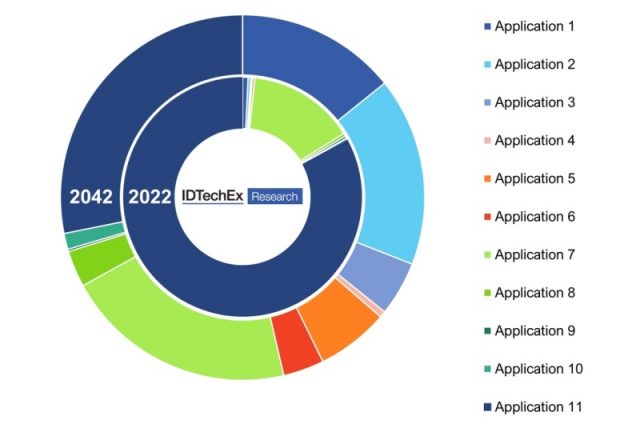WED, 11 MAY, 2022-theGBJournal | As mitigating the effects of climate change becomes one of the world’s top priorities, carbon dioxide utilization (CO2U) technologies have been set forth as part of the solution. Carbon utilization – or carbontech – involves the productive use of anthropogenic CO2, captured from stationary emission sources or from the air, to make useful products such as fuels, chemicals, plastics, and concrete.
The latest IDTechEx report, “Carbon Dioxide (CO2) Utilization 2022-2042: Technologies, Market Forecasts, and Players”, analyzes the viability of major CO2U pathways in technological, economic, and environmental terms.
The CO2U industry has gained momentum as a solution to achieve the world’s ambitious climate goals. Although mostly concentrated in Europe and North America, many pre-commercial projects are currently operating or under construction, with more in the pipeline supported by public and private investments. Carbontech companies such as LanzaTech, CarbonCure, and Liquid Wind report great interest in their solutions, even in the absence of strong regulatory incentives (e.g., carbon price, carbon tax).
IDTechEx finds that after a slow but steady progress during this decade, the CO2U market will likely grow rapidly from the 2030s onwards to surpass $285 billion by 2042, driven by rising climate commitments and a favourable regulatory framework. The market is set to become more diverse as it evolves, with applications such as CO2-derived construction products (e.g., concrete and aggregates) gaining market share due to its helpful thermodynamics and ability to sequester CO2 permanently.
Turning emissions into value
CO2 utilization prospects are diverse, with pathways including approaches such as thermochemical, electrochemical, photochemical, microbially-mediated, and combinations of these, as well as mineralization.
As CO2 is a thermodynamically stable molecule, many of these routes require significant amounts of clean energy, catalysts, integrated processes, or direct utilization of low-carbon hydrogen. Each pathway has its own drivers and barriers and may only be feasible in certain contexts.
For example, although at best carbon neutral, e-fuels may play a key role decarbonizing applications where the low energy density of batteries or hydrogen is prohibitive (e.g., aviation and long-haul transportation by ships or trucks).
Identifying the most value-added use-cases within the CO2U emerging industry is key to allocating resources to the technologies that are most profitable and that actually provide climate benefits. The new IDTechEx report “Carbon Dioxide (CO2) Utilization 2022-2042: Technologies, Market Forecasts, and Players” provides insights into promising processes being developed in CO2U, highlighting the pros and cons of each technology and end product. With a comprehensive outlook of the global CO2 utilization industry, this market report delivers a thorough analysis of the technological, economic, and environmental aspects that are set to shape the CO2U industry over the next twenty years.
The latest IDTechEx report considers CO2 use-cases in enhanced oil recovery, building materials, liquid and gaseous fuels, polymers, chemicals, and in biological yield-boosting (in crop greenhouses, algae, and fermentation), exploring the technology innovations and opportunities within each area.
Additionally, the report includes a twenty-year granular forecast for the deployment of CO2U technologies, subdivided into 11 end-use categories, alongside 20+ interview-based company profiles.
IDTechEx finds that CO2-derived construction materials and fuels offer vast potential for CO2 utilization. However, this will only be realized with the development of improved supply chains linking emitters to CO2 users – for a variety of CO2 volumes, widespread deployment of clean energy, or regulatory support.
For example, CO2-derived chemicals (excluding methanol) and polymers present limited climate mitigation potential due to their relatively lower scale but have great market potential due to their high market value and prospect of reducing feedstock costs.
Twitter-@theGBJournal|Facebook-The Government and Business Journal|email: gbj@govbusinessjournal.ng|govandbusinessj@gmail.com










